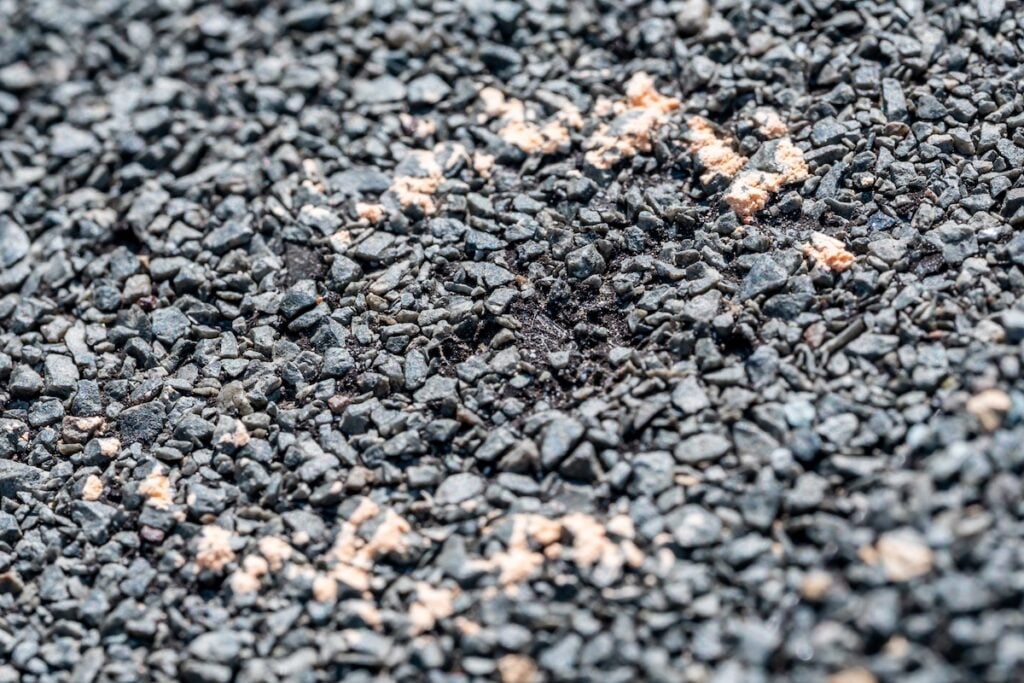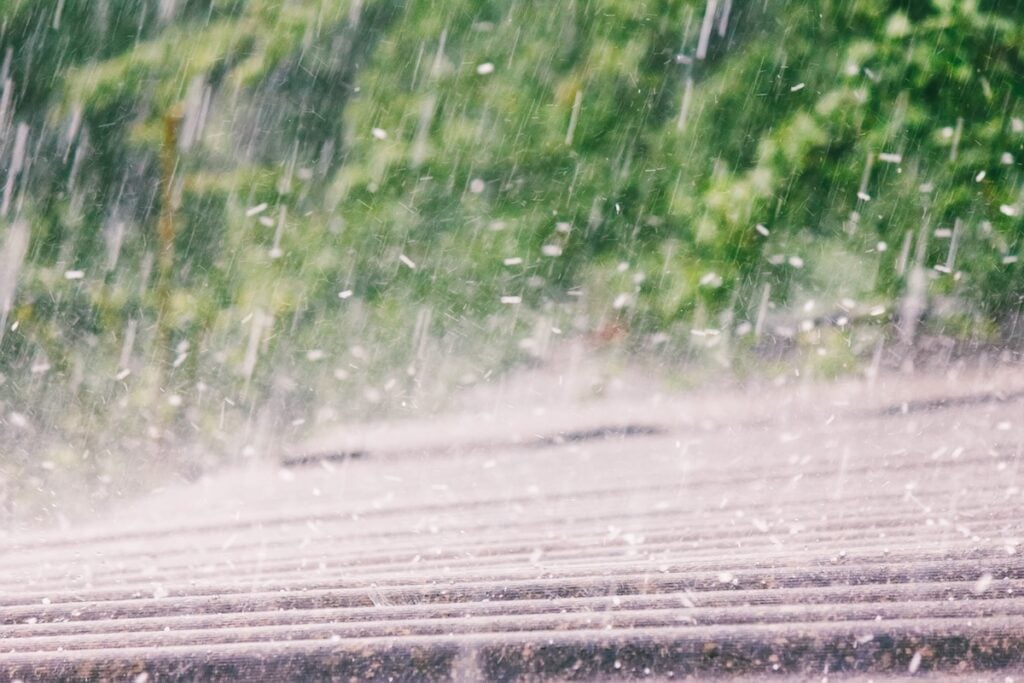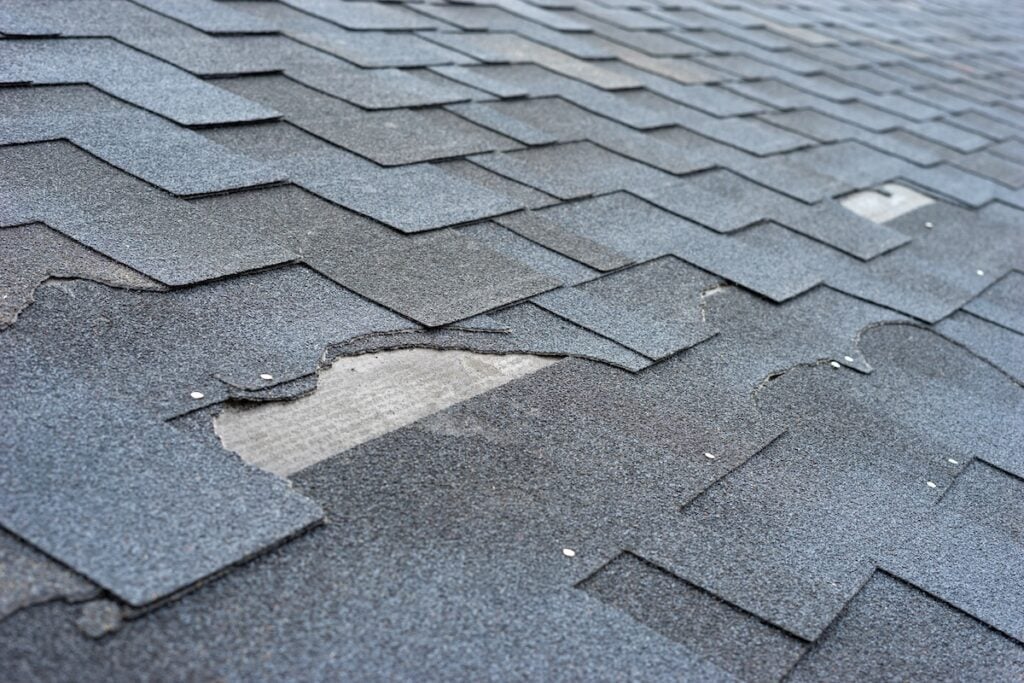
Roof Hail Damage Signs: 6 Key Things to Look For
August 08,2025
5 minutes Read
Roof hail damage can be difficult to spot at first glance, but catching it early can make the difference between a simple repair and a full roof replacement. Hailstorms can bruise shingles, crack flashing, and even damage your roof’s underlayment—leading to water leaks and long-term structural issues.
- Hail impacts often leave behind subtle but serious damage
- A post-storm inspection can reveal risks before they worsen
- Spotting hail damage early helps protect insurance coverage and your home
Let’s take a closer look at what roof hail damage really looks like and how to identify the most common signs.
⛈️ Why Hail Damage Isn’t Always Obvious
Unlike missing shingles or an active leak, hail damage doesn’t always create immediate problems. Instead, it weakens your roofing system over time—leaving your home more vulnerable to future hail storms and moisture intrusion.
Hailstones strike your roof with enough force to crush granules, dent metal, and loosen the waterproof seal on shingles. The result? Even small areas of damage can reduce your roof’s lifespan and void warranties if not addressed promptly.
That’s why it’s so important to know what to look for—even if your roof “looks fine” after a storm.

⚠️ 6 Key Signs of Roof Hail Damage
These are the most common symptoms homeowners can spot after a hailstorm. Some signs may appear within hours, while others develop over days or weeks.
- Bruised or Missing Granules: Look for dark, circular spots where granules have been knocked off asphalt shingles. You might also find piles of granules in your gutters or downspouts.
- Dented Roof Vents or Flashing: Check metal features like vents, flashing, skylight frames, and chimney caps for dents or dings. These spots can let water in if left unrepaired.
- Cracked or Split Shingles: Hail can cause shingles to split vertically or horizontally, especially on older or brittle roofs. These cracks allow water to seep underneath.
- Loose or Lifted Shingles: If hail has damaged the adhesive strip under shingles, they may lift or curl, exposing the layers beneath to the elements.
- Soft Spots on Roof Surface: Press gently (from a safe location or with professional help). Soft, spongey areas can signal bruised shingles or compromised decking.
- Leaks or Water Stains Indoors: A roof leak days or weeks after a hailstorm often means water found a path through weakened shingles, underlayment, or flashing.
🔍 Other Areas to Check After a Hailstorm
While your roof takes the brunt of the impact, other parts of your home can help confirm the presence of hail damage.
- Gutters and downspouts: Dents, bent sections, or granule buildup indicate hail impact.
- Siding or window frames: Cracks or chips in siding panels, screens, or trim suggest the hailstorm was strong enough to damage your roof.
- Decks and fences: Splintered wood or paint chips can also reflect hailstone size and force.
- Vehicles or patio furniture: Dents on metal surfaces often mirror damage to roof vents or flashing above.
If you see storm damage in these areas, it’s worth having a professional inspect your roof even if you don’t spot anything obvious yourself.

✅ How Roofers Confirm Hail Damage
Professional roofers use a combination of tools, experience, and safety equipment to assess damage after a hailstorm. Their process goes deeper than surface-level observation.
- Close-up shingle inspection: They look for granule loss, cracks, blisters, and bruising underfoot.
- Chalk test: White chalk rubbed over metal surfaces helps highlight dents that might otherwise go unnoticed.
- Moisture detection: In suspected leak areas, roofers may use infrared or moisture meters to test for hidden water infiltration.
- Documentation for insurance: Photos, written reports, and damage maps help support insurance claims and ensure proper repairs are approved.
Hiring a reputable roofing contractor ensures no detail is missed—and protects your eligibility for a storm damage insurance claim.
👉 What to Do If You Suspect Roof Damage
If you believe your home has been hit by hail, don’t wait for a leak to appear. Taking fast action protects your property, warranty, and wallet.
- Schedule a Roof Inspection: Whether or not significant damage is visible, a full inspection from a licensed roofing contractor is the first step. Many offer free inspections and will safely assess your roof from all angles.
- Document the Damage: Take photos of affected areas—roofing, siding, gutters, vehicles—before any repairs begin. This documentation will be helpful if you need to file a claim with your insurer.
- File an Insurance Claim Promptly: Most homeowner policies have a limited window for storm damage claims. The sooner you file, the better your chances of getting full coverage.
- Avoid DIY Repairs: Climbing a hail-damaged roof can be dangerous, and improper repairs may void your warranty or insurance coverage. Trust a trained professional for repairs and documentation.

👍 Preventing Future Hail Damage
While you can’t control the weather, you can protect your roof against future hailstorms by upgrading materials and keeping your system in top shape.
- Install impact-resistant shingles: Class 4-rated shingles are designed to withstand hail better than standard asphalt.
- Upgrade to metal roofing: Metal roofs are less likely to crack or split under hail impact and can offer longer life expectancy.
- Maintain proper attic ventilation: Keeping attic temperatures stable helps shingles stay flexible and less prone to damage.
- Schedule annual inspections: A yearly roof check ensures you’re catching wear and tear before hail can exploit weak spots.
📞 Contact Heartland for Expert Hail Damage Inspections
Roof hail damage isn’t always obvious—but it’s never something to ignore. Left unaddressed, it can lead to costly repairs, insurance complications, and even early roof failure.
At Heartland, our team knows exactly what to look for and how to respond after a storm. If you suspect hail damage, contact Heartland today for a free inspection and expert guidance on your next steps. We’re here to protect your home—starting from the top.

Get Started Today!
From roofing to siding, Heartland Roofing is the team you need to take your home exterior to the next level. All you need to do is reach out! Fill out our contact form or give us a call to get the reliable help that you need.
4.7 rating
94% recommend
A+ rating